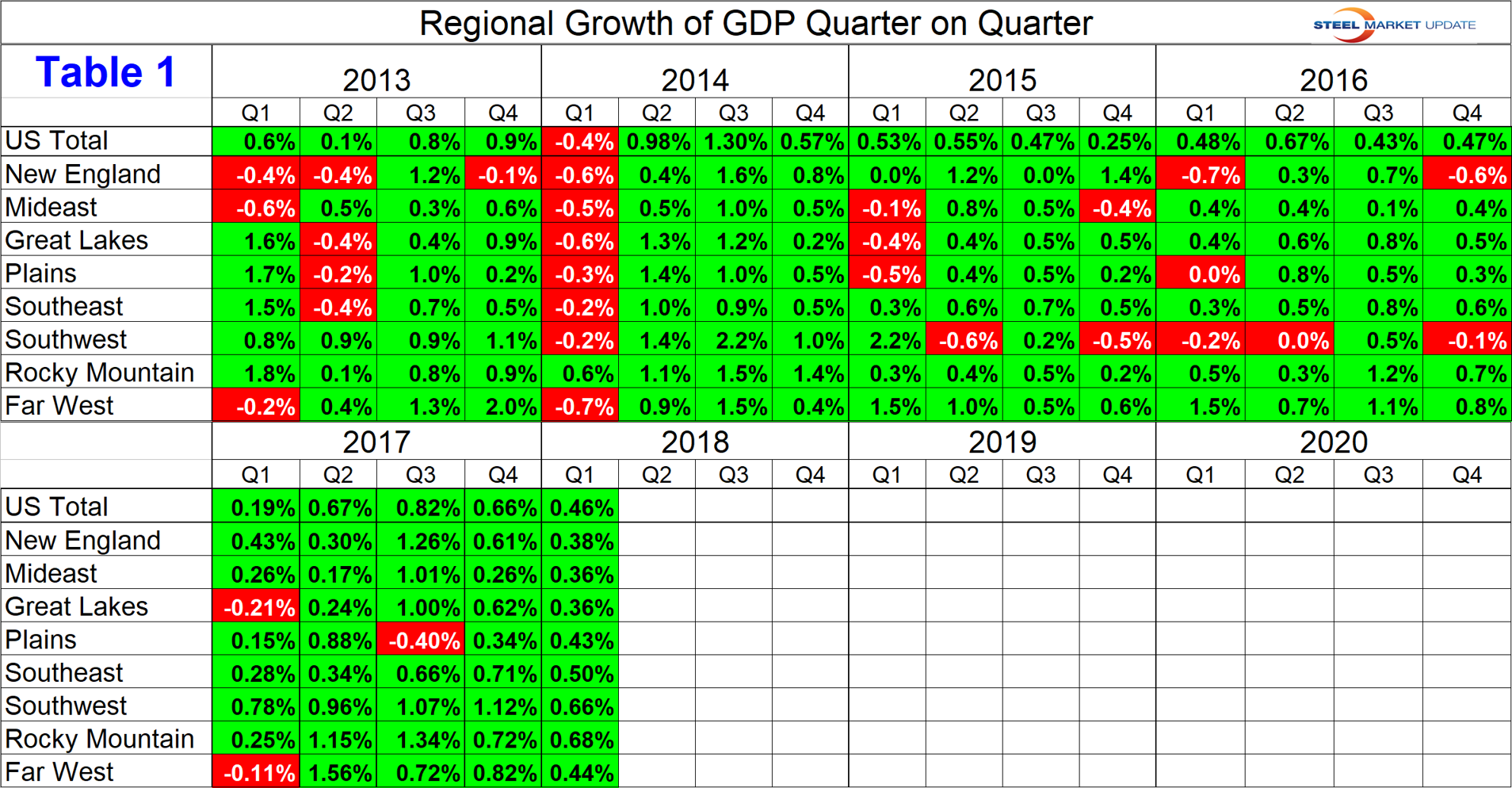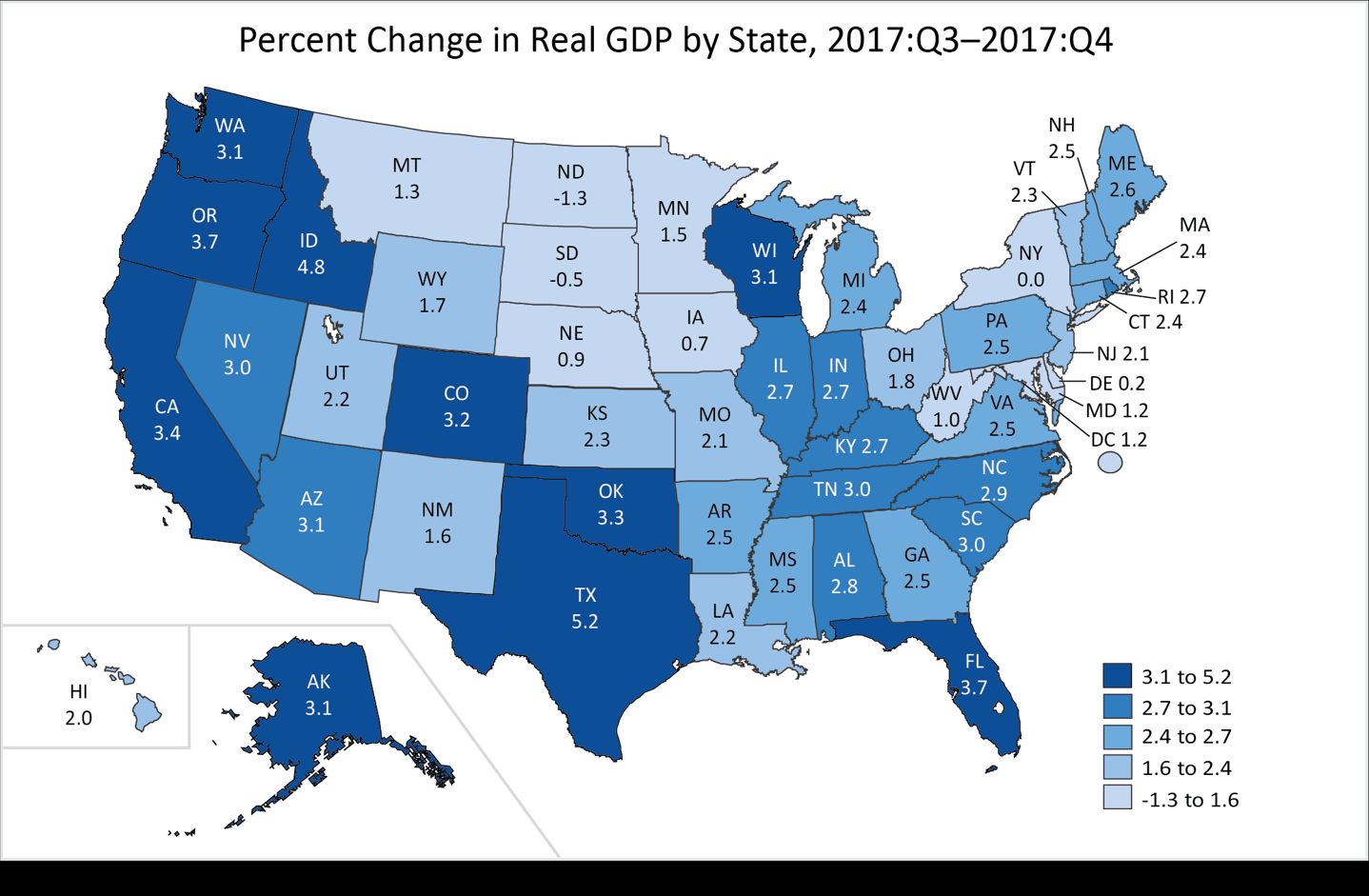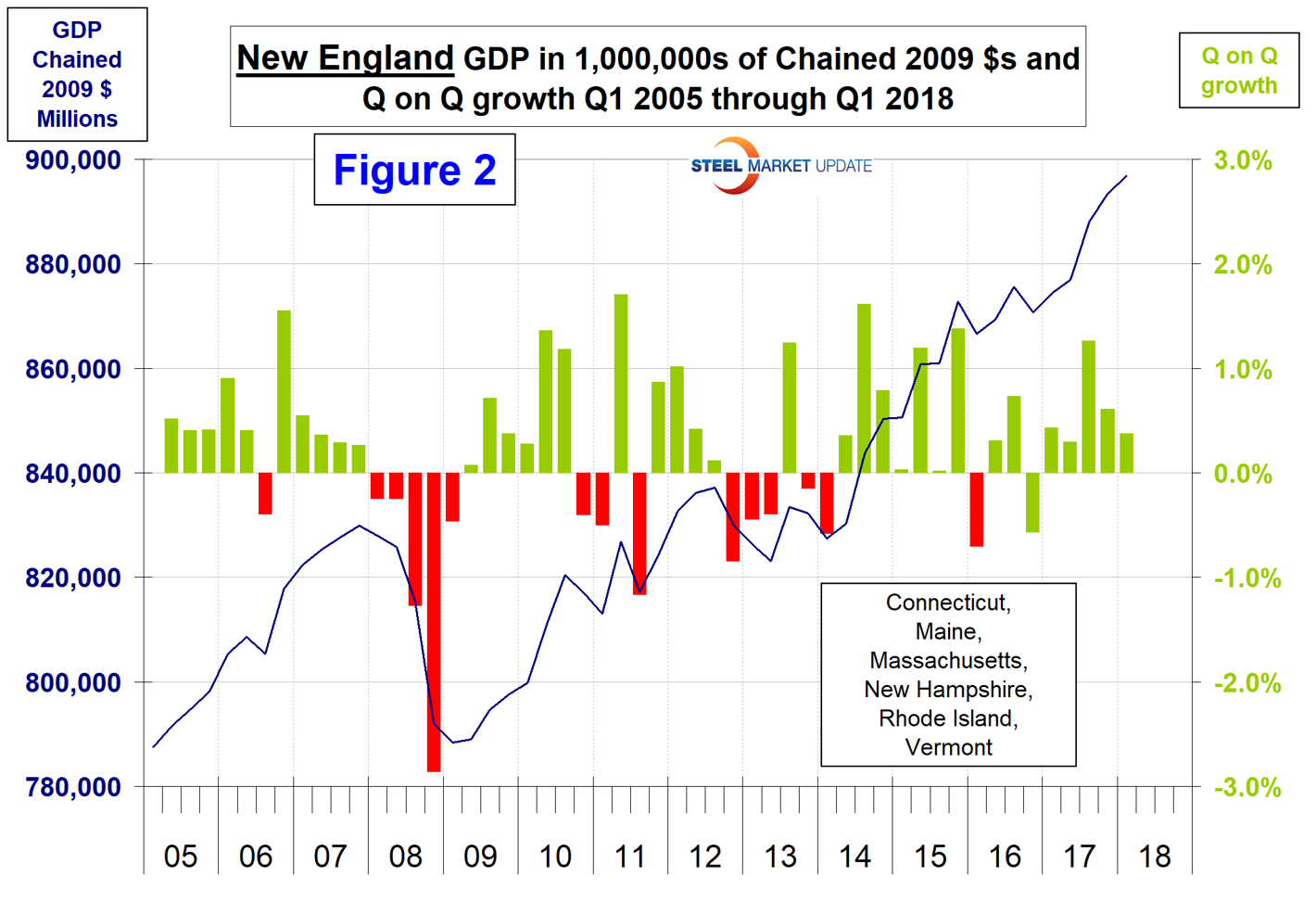Market Data

August 28, 2018
BEA: All Regions Saw Growth in GDP
Written by Peter Wright
U.S. gross domestic product grew in every region of the country in the last quarter of 2017 and the first quarter of 2018, according to Bureau of Economic Analysis data.
The BEA introduced a new data set for GDP by state and region in 2014 and backdated it to Q1 2005. This week, the data was updated through Q1 2018. Even though this data might be considered “old,” we think it’s worth reporting because it’s the foundation for where we are now. The data is published quarterly and is reported in chained 2009 dollars seasonally adjusted. Steel Market Update analyzes the data and reports to subscribers quarterly by region. Data and graphs for an individual state are available on request.
Table 1 shows the growth of regional GDP in chained 2009 dollars quarter on quarter. (These numbers are not annualized as is the case for published reports of the growth of national GDP.) In the last quarter of 2017 and the first of 2018, every region had positive growth.

The BEA has in the past produced a map of the United States showing quarter-over-quarter growth by state within each region. This month, the agency is in the process of redesigning its website and changing the base calculation from chained 2009 to chained 2012 dollars, so it has not updated the map. We are repeating here as Figure 1 the map for Q4 2017.

Regions as defined by the BEA are as follows:
New England: Connecticut, Maine, Massachusetts, New Hampshire, Rhode Island, Vermont.
Mid East: Delaware, DC, Maryland, New Jersey, New York, Pennsylvania.
Great Lakes: Illinois, Indiana, Michigan, Ohio, Wisconsin.
Plains: Iowa, Kansas, Minnesota, Missouri, Nebraska, North Dakota, South Dakota.
South East: Alabama, Arkansas, Florida, Georgia, Kentucky, Louisiana, Mississippi, North Carolina, South Carolina, Tennessee, Virginia, West Virginia.
South West: Arizona, New Mexico, Oklahoma, Texas.
Rocky Mountain: Colorado, Idaho, Montana, Utah, Wyoming.
Far West: Alaska, California, Hawaii, Nevada, Oregon, Washington.
In the first quarter of 2018, the Rocky Mountains had the highest growth rate at 0.68 percent. The Mid East and Great Lakes had the lowest at 0.36 percent. We are surprised by these results because of the consistency by region. There has never been such a result in any quarter since the BEA began its analysis in 2005.
In addition to this report of regional GDP, we publish quarterly reports of regional job creation and regional imports. Our intention with these three reports is to help subscribers compare their own corporate results with the overall business economy in their region. Figure 2 shows subscribers an example of the regional GDP graphs available on request for individual regions and states. This example shows the results for New England, which now has an annual economic output of almost $900 billion.

The U.S. total GDP values in this report are different and lower than the official report published in National Income and Product Account (NIPA) reports, partly because the GDP-by-state numbers exclude federal military and civilian activity located overseas (because it cannot be attributed to a particular state). In addition, the official quarterly report of national GDP is annualized, which increases the value by a factor of four. Also, the national accounts have been recalculated on the basis of chained 2012 dollars and the regional report is still based on 2009 dollars.







